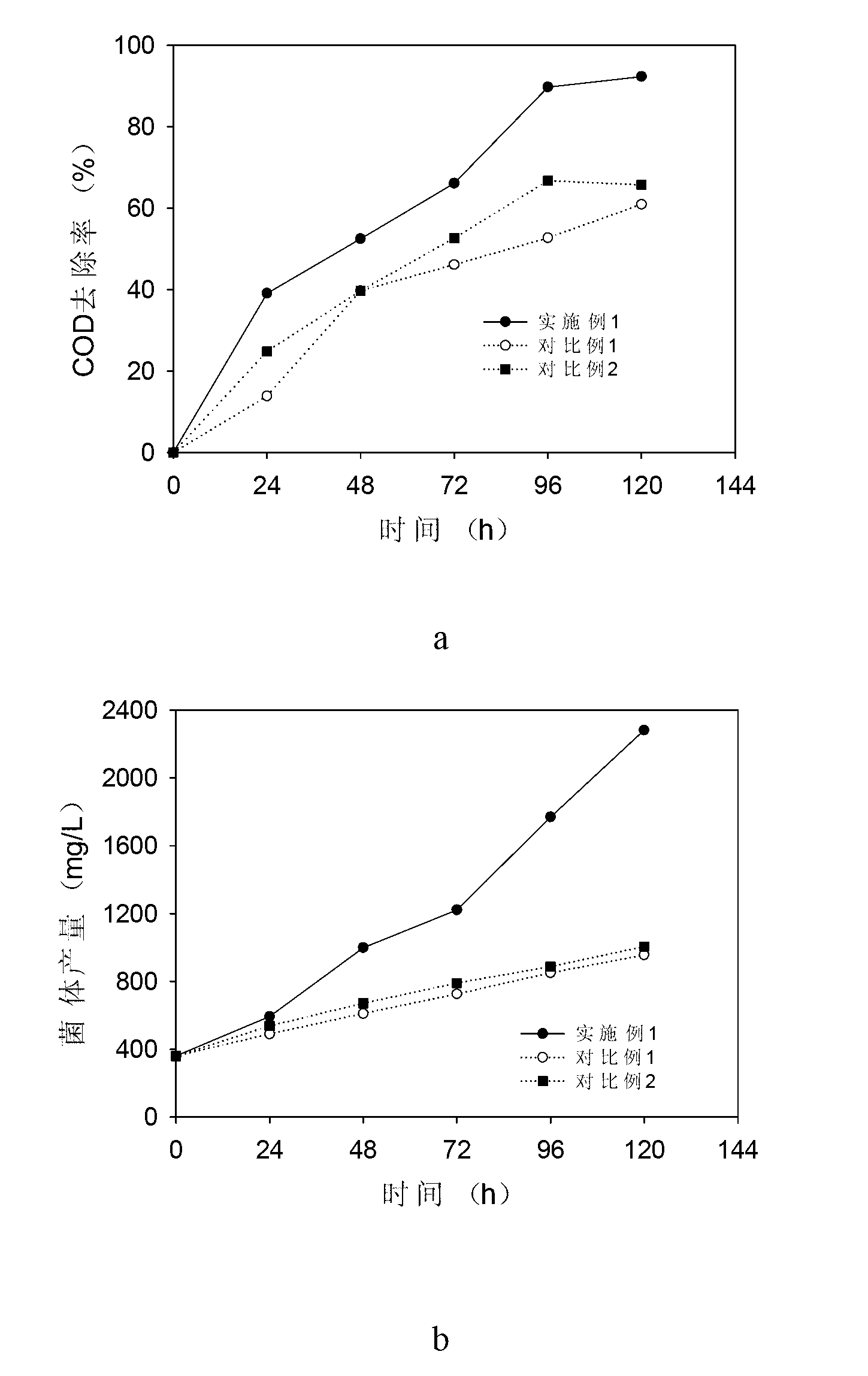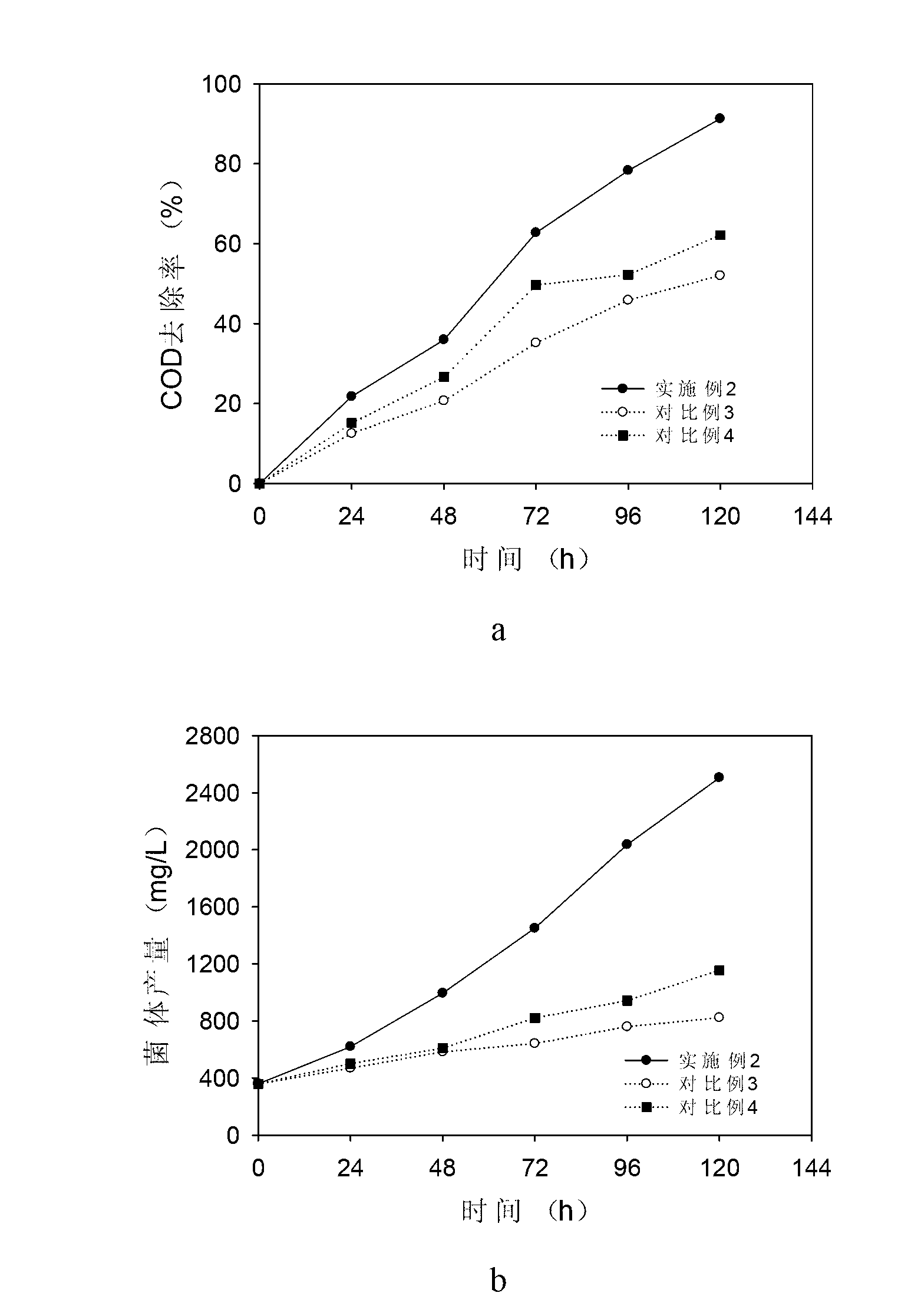Method of treating and recycling food processing waste water by using photosynthetic bacterium
A technology for food processing wastewater and photosynthetic bacteria, applied in chemical instruments and methods, biological water/sewage treatment, water/sludge/sewage treatment, etc., can solve the problems of low degree of resource utilization and secondary pollution, and achieve simplified process Process, promote growth, improve the efficiency of sewage treatment and the degree of sewage recycling
- Summary
- Abstract
- Description
- Claims
- Application Information
AI Technical Summary
Problems solved by technology
Method used
Image
Examples
Embodiment 1
[0024] In this embodiment, pectin processing wastewater is used as a representative wastewater rich in carbon source substances in food processing wastewater to test the effect of the invention. The initial COD concentration of pectin processing wastewater was 8319 mg / L.
[0025] First, add the small molecule carbon source substance potassium sodium tartrate to a final concentration of 600 mg / L and the small molecule nitrogen source substance ammonium chloride to a final concentration of 200 mg / L to the pectin processing wastewater;
[0026] Then adjust the pH value of pectin processing wastewater to 7.0~9.0;
[0027] Then add Rhodopseudomonas palustris to the pectin processing wastewater to a final concentration of 360 mg / L;
[0028] The treatment conditions are as follows: the treatment temperature is 25-30°C, and the treatment time is 120 hours; an incandescent lamp is used as an external light source, and the external light intensity is controlled to be 500-1500 lux; the ...
Embodiment 2
[0030] In this embodiment, milk processing wastewater is used as representative wastewater rich in nitrogen source substances in food processing wastewater to test the effect of the invention. The initial COD concentration of milk processing wastewater was 8032 mg / L.
[0031] The operating method and operating conditions of the test are the same as in Example 1.
PUM
 Login to View More
Login to View More Abstract
Description
Claims
Application Information
 Login to View More
Login to View More - R&D
- Intellectual Property
- Life Sciences
- Materials
- Tech Scout
- Unparalleled Data Quality
- Higher Quality Content
- 60% Fewer Hallucinations
Browse by: Latest US Patents, China's latest patents, Technical Efficacy Thesaurus, Application Domain, Technology Topic, Popular Technical Reports.
© 2025 PatSnap. All rights reserved.Legal|Privacy policy|Modern Slavery Act Transparency Statement|Sitemap|About US| Contact US: help@patsnap.com


